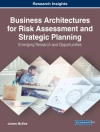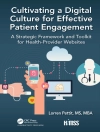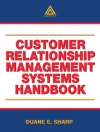The field of executive coaching is growing at an astonishing rate. Corporations are increasingly turning to coaching as an intervention, as it offers leaders and managers both on-the-job learning and built-in follow-up. But how can you make the best use of coaching within your organization?
Executive Coaching for Results helps this critical leadership development method come of age. This is not a “how-to-coach book”—there are already plenty of those—but rather a comprehensive guide on how to strategically use coaching to maximize development of talent and link the impact of coaching to bottom-line results. Underhill, Mc Anally, and Koriath draw on their rigorous original research (through Executive Development Associates) with Fortune 1000 and Global 500 companies such as Disney, IBM, UBS, Unilever and many others,
and combine that with their years of industry experience to advance the state of the art.
Executive Coaching for Results includes topics such as:
Integrating coaching into your organization’s overall leadership development strategy
Locating and screening coaches worldwide
Developing an internal coaching program
Deciding which coaching assessments and instruments are appropriate to your situation
Measuring the impact and ROI of coaching
Following up after coaching
Throughout, the authors provide numerous examples from major organizations such as Dell, Johnson and Johnson, Intel, and Wal-Mart. Offering practical learning, best practices, and illuminating case studies, this is the first definitive guide to the effective use of executive coaching in the corporate environment.
Cuprins
Figures and Tables
Foreword by Marshall Goldsmith
Preface
Acknowledgments
Introduction
Chapter 1–Understanding the Coaching Field
What is Coaching?
Purpose of Coaching–Why?
What Does Coaching Replace?
Who Gets Coaching?
Coaching Highlights
Chapter 2–The Importance of Culture and Leadership Support
Culture Counts
Get Leadership Support
Why Is Coaching Different?
Marketing Matters
Coaching Highlights
Chapter 3:–Linking Coaching to Leadership Development, Talent Management, and Human Resource Practices
Link to the Leadership Development Strategy
Linking to the Talent Management Approach
Linking to Leadership Development and Human Resources Personnel
Coaching Highlights
Chapter 4–Managing the Coaching Engagement
Prepare the Executive for Coaching
Leaders: Make the Most of Your Coaching, Sue Brown SJ Brown & Associates; Study Researcher
Prepare the Boss for Coaching
Don’t Underestimate Matching
Watch for Stalls
Find Mismatches and Fix Them Quickly
Get Clear on Length and Frequency
Coaching Lite: the Wal-Mart Way, Heidi Glickman & Margaret Durr Wal-Mart
Reaching the APEX: How Agilent Leaders Benefit from Tiered Options for the Duration of Coaching, Christine Landon & Alison Hu Agilent Technologies
Thoughts on Duration, Carol Braddick Graham Braddick
Partnership; Study Researcher
Activities in Coaching
Know the Costs, But That’s Not All
Chapter 5–The Toolbox: Instruments and Assessments
Why Use Assessments?
Gather Feedback
Expanding the Tool Box
Determining Instrument Policies
How to Manage Tool Selection
Chapter 6–Balancing Consistency and Flexibility
Be Consistent–Or Not
Keeping Coaching Alive: Nearing a Decade of Success, Pat Santillanes, Anthony Lamera
California Public Employees’ Retirement System (Cal PERS)
Add Consistency to Taste
Coaching Across 200 Companies: Providing a Systematic Framework, Respecting Entrepreneurial Cultures, Janet Matts Johnson & Johnson
Behind-the-Scenes: Managing a Global Executive Coaching Practice, Kimberly Arnold, Barbara Kenny (Dell, Inc.) & Steve Sass Alliance for Strategic Leadership
Chapter 7–Building an Internal Coaching Program
Consider the Opportunity
Compare Internal to External Coaching
The Positives of Internal Coaching
Internals as Coaches, Elaine Roberts & Kim Deutsch The Progressive Group of Insurance Companies
Internal Coaches at Intel, Lori Severson & Dorothy Lingren Intel Corporation
Challenges for Internal Coaches
Leader-as-Coach
Coaching Mastery at Bell Canada, Mary O’Hara Bell Canada
Coaching within Saudi Aramco, Kenneth J. Rediker, Ph.D. Saudi Aramco
Mentoring
The Debate Continues
Chapter 8–Measuring Impact
Start at Satisfaction with Coach
Include Impact Metrics
Ask the Boss to Assess
Follow-up with Another
Measure Return-on-Investment
Measuring the Impact, Deborah Swanson Sony Corporation
What Makes Executive Coaching Effective?, Mary-Wayne Bush The Foundation of Coaching; Raytheon
The Bottom Line
Chapter 9–The Art of Finding Qualified Coaches
Qualifications
Locating Coaches
Coaching Vendor Selection Process Janet Weakland, Bob Gregory and Cheryl Ramirez BP
Advantages for Using a Trusted Single Provider for Executive Coaching Sources Kristin Olsen Thrivent Financial
Screening Coaches
Unilever’s Executive Coach Assessment Process Sam Humphrey Unilever
Does Certification Matter?
Chapter 10–Creating a World Class Coaching Community
Why It Matters
Stay Connected to the Pool
Dell’s First Annual Global Coaching Forum:
Keeping the Partnership Strong Kimberly Arnold & Barbara Kenny (Dell, Inc.) & Steve Sass (Alliance for Strategic Leadership)
Building Community with Coaches Janet Matts Johnson & Johnson
Develop Coaching Talent
Know How Coaches Tick
Chapter 11–Life After Coaching
When Coaching Interventions Terminate Harris Ginsberg Chemtura Corporation
Renegotiate the Relationship
Boost the Fading Finish
Internals Can Continue Support
Keep Coaching Alive From the Inside Kevin Wilde General Mills
Beware of Dependencies
Self-Coaching
Keep the Measures Coming
Chapter 12–The Future of Coaching
Practice Standardization
Results Focused
New Forms of Coaching
Developmental Coaching William Hodgetts, Ph.D. Fidelity Investments
Regulation
Coaching through Technology
Industry Trends
Closing Thoughts
Coaching Program Design Checklist
Afterword by Richard J. Leider
About the Authors
About the Contributors
References
Despre autor
Dr. Koriath is a psychologist with a multidisciplinary career. He is President of Full Circle Learning, Inc. and Vice President, Leadership
Through Personal Development at Executive Networks, Inc. where has helped to create and deliver a community of practice networking experience to leaders of Fortune 1000 companies. John has held various positions with Executive Development Associates, Inc., and was VP of Research directing the seminal research study this book presents.
John is drawn to projects, people, and relationships that seek to bring positive change to twenty-first century living. He approaches his work with a diverse set of skills and experiences gathered in a career as an educator, scientist, and therapist.
John is a cofounder of the Turtle Island Project, a nonprofit organization whose programs integrate principles of mind and body through the teachings of Native American rituals and ceremonies. John is a student and instructor in the martial art of Aikido.
John also served for ten years on the faculty of Arizona State University, where he taught in the field of psychology. During that time he conducted psychophysiological research, in part as the Flinn Foundation Fellow for Cardiovascular Research.
Dr. Koriath published a variety of articles and book chapters while in academia. More recently his chapter, “Using Communities of Practice to Extend Learning beyond Classroom Walls, ” was in The Future of Executive Development, James F. Bolt, ed., 2005, Executive Development Associates, Inc. He also co-authored High-Impact Executive Coaching, research conducted with Executive Development Associates, Inc. in 2005.












